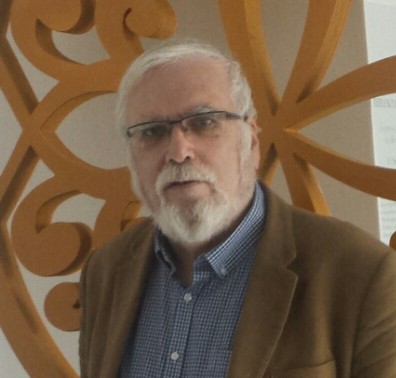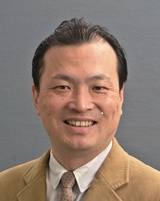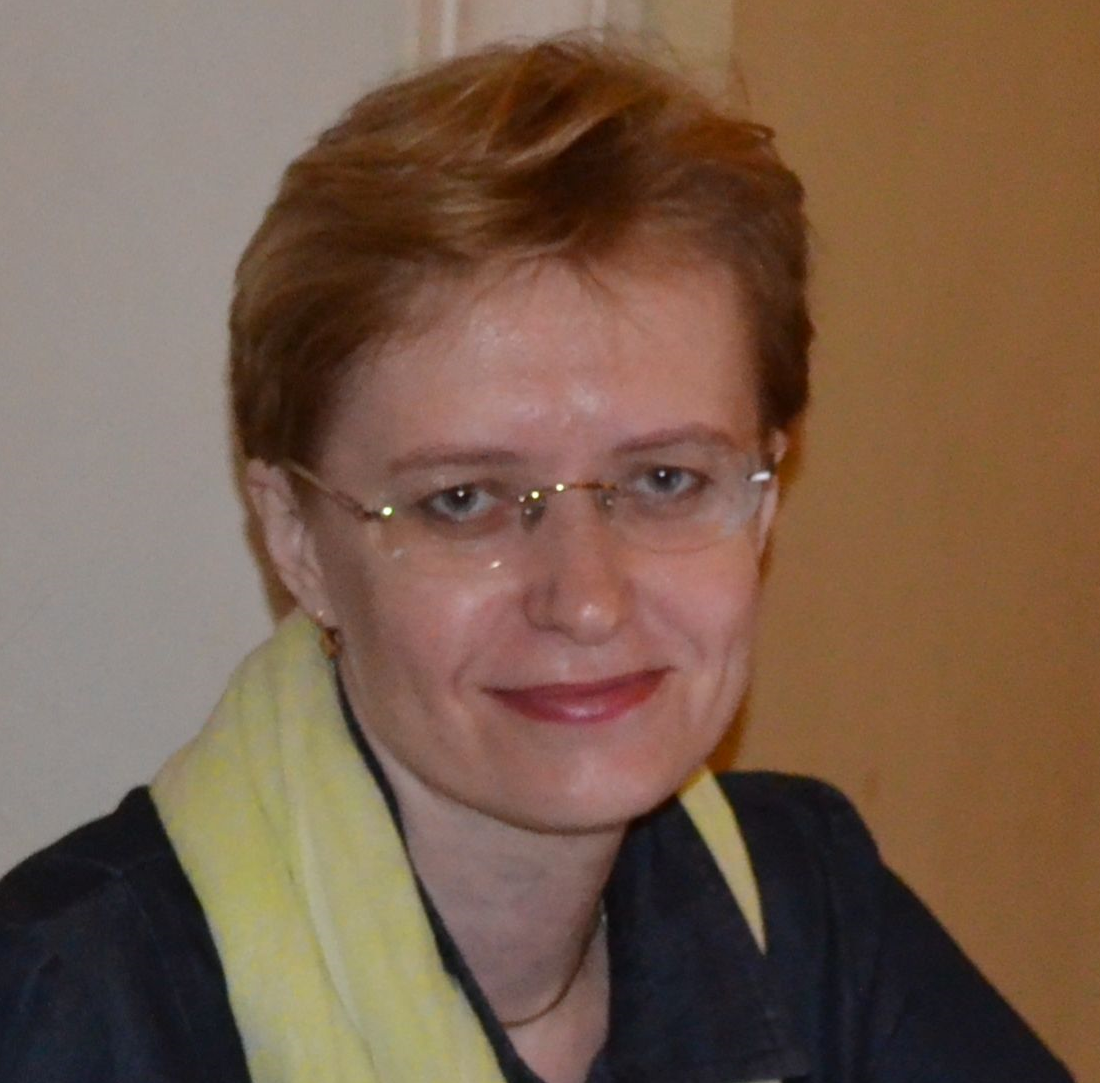Theme: Solution for current & future global challenges
Biopolymers 2019
We would like to invite all the participants from all over the world to attend "9th World Congress on Biopolymers & Bioplastics" during August 26-27, 2019 in London, UK, which includes prompt keynote presentations, Oral talks, Poster presentations and Exhibitions.
Biopolymers are chain-like molecules made up of repeating chemical blocks and can be very long in length. Depending on the nature of the repeating unit they are made of polysaccharides, proteins of amino acids, and nucleic acids of nucleotides. The studies are more concerned to Green Composites, Biopolymer Feed Stock Challenges, Biofibers & Microbial Cellulose, Biomaterials and Bioplastics. Advanced studies are being made to improvise developments in Biopolymer Technology, Waste Management, pharmaceutical and biomedical applications, Biodegrade ability, and many more.
Over the past few years, global economic activities have increased a lot. This tremendous growth has raised serious problems about current important patterns of production and consumption. As the current society has increased its attention in understanding of the environmental aspects and its industrial practices, greater attention has been given to the concept of sustainable economic systems that rely on energy from undepletable source and materials. The use of Biologically derived Polymers become as an important component of this global world.
The history of Biopolymer is not a long one. Various reasons are associated with the research and development of Biopolymers. Use of Bioplastics will make a tremendous change and will help rid of the conventional plastics , which is a welcome change.
Biopolymers 2019 (WCBB-2019) offers a fantastic opportunity to meet and make new contacts in the field of Biopolymer, Bioplastic, Biocomposites, Biomaterials, Polymer Science, Biomedical and Tissue Engineering by providing collaboration spaces and break-out rooms with tea and lunch for delegates between sessions with invaluable networking time for you. It allows delegates to have issues addressed on Biomaterials and Biocomposites by recognized global experts who are up to date with the latest developments in the respective field and provide information on new techniques and technologies. This International Biopolymers and Bioplastics conference will feature renowned keynote speakers, plenary speeches, young research forum, poster presentations, technical workshops and career guidance sessions.
- Eminent Scientists of Polymer Science & Chemical Engineering, Green Chemistry
- Polymer Research Professors and research fellows
- Students from Material science, Polymer Science and Technology & Chemical Engineering
- Directors of Polymer Manufacturing companies, Green Chemicals Companies
- Biopolymer Engineers, Polymer Science Engineers & Chemical Engineers
- Members of different Bioploymer, Waste Management,Chemistry,Chemical Engineering associations.
Theme: A solution for current & future Global predicament
Summary:
Biopolymers 2019 is the platform to gain or share the knowledge in the new technological developments in the field of polymers, Bioplastic, Bio materials, Polymer Science and tissue engineering. This conference brings together professors, researchers, scientists, students in all the areas of Bio materials, Polymer Science and provides an international forum for the spreading of approved research. We are honored to invite you all to attend and register for the “9th World Congress on Biopolymers & Bioplastics” which is scheduled for August 26- 27, 2019, London, UK.
The organizing committee is gearing up for an exciting and informative conference program this year also which includes plenary lectures, symposia, workshops on a variety of topics, poster presentations and various programs for participants from all over the world. We invite you to join us at the Biopolymer Congress 2019, where you will be sure to have a meaningful experience with scholars from around the world. All members of the Biopolymer Congress organizing committee look forward to meeting you in London, UK.
For more details please visit: https://biopolymers.insightconferences.com/
Why London?
The City of London is also known as the Square Mile, the financial district and historic centre of London.
The City is the area of London that originally lay within the ancient city walls. This part of Central London is not as big a tourist destination as the West End, Westminster or South Bank, but is a must for anyone wishing to explore and understand London.
London is a global leader in banking and financial services, so the city of 8.7 million residents attracts a steady stream of business travelers. With 43 universities -- the highest concentration of higher education in Europe -- it's popular with international students and scholars.
The City of London is home to some of London’s most popular attractions, including Tower Bridge, The Tower of London, St Paul’s Cathedral and the Museum of London. Notable buildings in the area include the Gherkin, 30 St Mary Axe and The Cheese grater at 122 Leaden hall Street. A great place to dine out, The City is crammed full of upscale eateries and celebrity chef restaurants. If you have cash to splash, go shopping at the historic Leaden hall Market or Old Spitalfields Market. If you choose to stay in The City, you’ll find accommodation to suit all tastes and budgets.
The City is the world's leading centre of international finance. In British parlance, The City often refers to the financial sector, just as Americans might refer to Wall Street. This area contains 255 foreign banks, which is more than any other financial centre. It also is home to the Bank of England and houses other institutions such as Lloyds and the London Stock Exchange. Every weekday approximately three hundred thousand workers come into the City to work in small and large business and financial institutions.
Europe is a major hub for the entire bioplastics industry; it ranks highest in the field of research and development and is the industry’s largest market worldwide.
For more information click here
With the successful journey of Biopolymer Congress 2018, Berlin, Germany, we are proud to announce that we have planned to continue its series in London in August 26-27, 2019.
On this auspicious occasion, we invites all the participants across the globe to take part in the International Scientific Meet “9th World Congress on Biopolymer” during August 26-27, 2019 London, UK, with the theme “Solution for current & future global challenges”.
Right now we are in huge global crisis of Plastic Pollutions, Ocean Pollutions and these are the main reason for Climate Change. It’s already started to destroy our food chain. We have to act before it’s too late to save ourselves and our future.
Biopolymers 2019 offers a fantastic opportunity to meet and make new contacts in the field of Biomaterials, Polymer Science and engineering, by providing collaboration spaces and break-out rooms with tea and lunch for delegates between sessions with invaluable networking time for you. It allows delegates to have issues addressed on Bio materials by recognized global experts who are up to date with the latest developments in the Bio materials field and provide information on new techniques and technologies. This International Biopolymer Materials conference will feature renowned keynote speakers, plenary speeches, young research forum, poster presentations, technical workshops and career guidance sessions
Track 1: Biomaterials and Biocomposites
Biomaterials are those materials which have been engineered to interact with biological systems for used in basically medical purpose. to augment or replace a natural function. As a science, it’s been about fifty years old. Study of biomaterials is called biomaterials science or biomaterials engineering. Many companies investing huge amounts of money for the development of new products. It holds within elements of medicine, biology, chemistry, tissue engineering and materials science.
A Biocomposite is a composite material composed of matrix (resin) and a reinforcement of natural fibers. These kinds of materials always providing biocompatibility. The matrix phase is formed by polymers derived from renewable and non-renewable resources. The matrix is important to protect the fibers from environmental degradation and mechanical damage, to hold the fibers together and to transfer the loads on it.
In addition, biofibers are the principal components of biocomposites, which are derived from biological origins, for example fibers from crops (cotton, flax or hemp), recycled wood, waste paper, crop processing byproducts or regenerated cellulose fiber(viscose/rayon). The interest in biocomposites is rapidly growing in terms of industrial applications (automobiles, railway coach, aerospace, military applications, construction, and packaging) and fundamental research, due to its great benefits (renewable, cheap, recyclable, and biodegradable).
Biocomposites can be used alone, or as a complement to standard materials, such as carbon fiber.
Related Conference
Sixth International Symposium Frontiers in Polymer Science, 05-08 May 2019, Budapest, Hungary | Performance Polypropylene, May 14-15, 2019, Cologne, Germany
Recommended
Biopolymer Conference | Bioplastic Conference | Biomaterials Conference | Sequencing Conference | Polymer Chemistry Conference | Microbial Natural Fiber Conference | Polymer Science Conference | Natural Fibers Conference | Biopolymer Conference 2019 | Bioplastic 2019 USA | Biopolymer Events | Biopolymer Summit | Biopolymer Expo | Polymer Chemistry Meetings | Polymers workshops and symposia
Polymers Societies and Associations
Europe: Royal Society of Chemistry; Society for Analytical Chemistry; Chemical Society; Royal Institute of Chemistry; Société chimique de France; Deutsche Chemische Gesellschaft zu Berlin; Danish Chemical Society; Society of Chemical Industry
USA: American Chemical Society; Society of Chemical Industry (American Section); Society of Chemical Manufacturers and Affiliates; Chemical Society of Peru; Canadian Society of Clinical Chemists; Chemical Society of Mexico ; Brazilian Chemical Society; Chemical Institute of Canada
Asia- Pacific: Chemical Society of Japan; Royal Australian Chemical Institute; Indian Chemical Society; Korean Chemical Society; Chemical Society of Pakistan; Iranian Chemists Association; Pan Africa Chemistry Network
Track 2: Advanced Polymers
Polylactide (PLA) the most promising one of Biopolymer these are a type of plastics which is being manufactured from petrochemicals, generated from sustainable feed stocks such as sugar, starch or Cellulose. Till date, the use of Biopolymer, includes the first generation PLA, has been limited by their Physical properties and relatively high cost to manufacture. Next generation Biopolymer, are the Plastics component fabrication, Polysaccharides second generation PLA, are to be cheaper and to improve their performance and a wide variety of application to capture an increasing share of the various markets for Biopolymer. Innovations has already achieved significant success with its early investments its $1.5m investment in obesity drug developer return up to $22m, following its sale for $100m in 2013, while the sale of a small molecule drug discovery company, resulted in Innovations realizing $9.5m, a 4.7 return on investment. In year 2015, Innovations invested $14.0m in 20 ventures, helping to launch three new companies.
Recommended
Biopolymer Conference | Bioplastic Conference | Biopolymers 2019 | Bioplastic 2019 | Best Biopolymer Conference | Best Bioplastic Conference | Polymer Conference | Chemistry Conference | Bioplastic Conference in UK | Biopolymer Conference in UK
Related Conference
9th World Congress on Biopolymer and Polymer Chemistry, May 13-14, 2019, Perth, Australia, 9th International Conference on Biopolymer and Polymer Sciences, November 19-21, 2018 Bucharest, Romania
Biopolymer Societies and Associations
Europe: Applied Chemical Engineering Society (ACES); Association for the Development of Biomaterials; French Chemical Society; Bio-Process Systems Alliance (BPSA); British Plastics Federation; European Council for Plasticizers and Intermediates; European Federation of Chemical Engineering;
USA: American Chemical Society; American Chemical Society; American Coatings Association; Brazilian Polymer Association; Division of Polymer Physics; American Chemical Society(ACS) ; American Physical Society Division of Polymer Physics (APS DPOLY);
Asia- Pacific: ASME BioProcessing Equipment; Australian Society of Biochemistry; Biochemistry Society; Bioenvironmental Polymer Society; IAENG Society of Chemical Engineering; Indian Institute of Chemical Engineers (IIChe);
Track 3: Bioplastics and its Applications
Bioplastic are plastics derived from renewable biomass sources, such as vegetable fats and oils, corn starch, or microbiota. Bioplastic can be made from agricultural by-products and also from used plastic bottles and other containers using microorganisms. Common plastics, such as fossil-fuel plastics are derived from petroleum or natural gas. Production of such plastics tends to require more fossil fuels and to produce more greenhouse gases than the production of biobased polymers (Bioplastic). Some, but not all, Bioplastic are designed to biodegrade. Biodegradable plastics can break down in either anaerobic or aerobic environments, depending on how they are manufactured. Bioplastic can be composed of starches, cellulose, Biopolymer, and a variety of other materials.
Recommended
Top Biopolymer Conference | Top Bioplastic Conference | Biopolymer Events | Biochemistry Conference | Biopolymer Conference Europe | International Conference on Biopolymer | International Conference on Bioplastic | Biopolymer meetings | Biopolymer Summit
Related Conference
6th International Symposium Frontiers in Polymer Science, 05-08 May 2019, Budapest, Hungary, 35th INTERNATIONAL CONFERENCE of THE POLYMER PROCESSING SOCIETY, 26-30 May 2019, Cesme-Izmir, Turkey
Bioplastics Societies and Associations:
Europe: Society for Biomaterials; Society of Chemical Engineers; Society of Chemical Industry; Society of Polymer Science; The Chemical Engineering Graduate Student Association (ChEGSA); The polymer society; The Scandinavian Society for Biomaterials
USA: American Chemical Society; American Chemical Society; American Coatings Association; Brazilian Polymer Association; Division of Polymer Physics; American Chemical Society(ACS) ; American Physical Society Division of Polymer Physics (APS DPOLY);
Asia- Pacific: ASME BioProcessing Equipment; Australian Society of Biochemistry; Biochemistry Society; Bioenvironmental Polymer Society; IAENG Society of Chemical Engineering; Indian Institute of Chemical Engineers (IIChe);
Track 4: Ocean Plastics
Ocean plastic research is a relatively new field, the billions upon billions of items of plastic waste choking our oceans, lakes, and rivers and piling up on land is more than unsightly and harmful to plants and wildlife. About 8 million metric tons of plastic are thrown into the ocean annually. Of those, 236,000 tons are micro plastics– tiny pieces of broken-down plastic smaller than our little fingernail. There is more plastic than natural prey at the sea surface of the Great Pacific Garbage Patch, which means that organisms feeding at this area are likely to have plastic as a major component of their diets. For instance, sea turtles by-caught in fisheries operating within and around the patch can have up to 74% (by dry weight) of their diets composed of ocean plastics. By 2050 there will be more plastic in the oceans than there are fish (by weight).
Recommended
Green Energy | Biotechnology | Green Composite | Biomaterials | Chitin and Chitosan | Applications of Biopolymer | Solar cells | Biochemistry | Biocomposites | Ocean Plastics | Tissue Engineering | Regenerative Medicine | Polymer Coatings | Biofilm | Monomers
Related Conference
11th Polyimides & High Performance Polymers Conference, 02-05 Jun 2019, Montpellier, France, 10th ECNP International Conference on Nanostructured Polymers and Nanocomposites, Oct 01-05 2018, San Sebastian, Spain
Ocean Plastics Societies and Associations
Europe: Society for Biomaterials; Society of Chemical Engineers; Society of Chemical Industry; Society of Polymer Science; The Chemical Engineering Graduate Student Association (ChEGSA); The polymer society; The Scandinavian Society for Biomaterials
USA: American Chemical Society; American Chemical Society; American Coatings Association; Brazilian Polymer Association; Division of Polymer Physics; American Chemical Society(ACS) ; American Physical Society Division of Polymer Physics (APS DPOLY);
Asia- Pacific: ASME BioProcessing Equipment; Australian Society of Biochemistry; Biochemistry Society; Bioenvironmental Polymer Society; IAENG Society of Chemical Engineering; Indian Institute of Chemical Engineers (IIChe);
Track 5: Natural polymers
Natural polymers include the RNA and DNA that are so important in genes and life processes. In fact, messenger RNA is what makes possible proteins, peptides, and enzymes. Enzymes help do the chemistry inside living organisms and peptides make up some of the more interesting structural components of skin, hair, and even the horns of rhinos. Other natural polymers include polysaccharides (sugar polymers), Cellulose, starch, lignin, chitin and polypeptides like silk, keratin, and hair. Natural rubber is, naturally a natural polymer also, made from just carbon and hydrogen. These materials and their derivatives offer a wide range of properties and applications. Natural polymers tend to be readily biodegradable, although the rate of degradation is generally inversely proportional to the extent of chemical modification. US companies demand for natural polymers is forecast to expand 6.9 % annually to $4.6 billion in 2016. Cellulose ethers, methyl cellulose, will remain the largest product segment. This study analyses the $3.3 billion US natural biopolymer industries. It presents historical demand data for the years 2001, 2006 and 2011, and forecasts for 2016 and 2021 by market.
Recommended
Biocomposites meetings | Bioplastic meetings | London Conference | Biomaterials Conference | Biopolymer in London | Chemistry Conference UK | chemistry societies and associations | Biopolymer Associations and Societies | Bioplastic Summit | Biopolymer Expo
Related Conference
Gordon Research Seminar — Polymers, 08-09 Jun 2019, South Hadley, USA, Gordon Research Conference — Polymers, 09-14 Jun 2019, South Hadley, USA, 4th Annual Conference and Expo on Biomaterials, Feb 25-26, 2019, London, UK
Polymers Societies and Associations
Europe: Applied Chemical Engineering Society (ACES); Association for the Development of Biomaterials; French Chemical Society; Bio-Process Systems Alliance (BPSA); British Plastics Federation; European Council for Plasticizers and Intermediates; European Federation of Chemical Engineering;
USA: American Chemical Society; American Chemical Society; American Coatings Association; Brazilian Polymer Association; Division of Polymer Physics; American Chemical Society(ACS) ; American Physical Society Division of Polymer Physics (APS DPOLY);
Asia- Pacific: ASME BioProcessing Equipment; Australian Society of Biochemistry; Biochemistry Society; Bioenvironmental Polymer Society; IAENG Society of Chemical Engineering; Indian Institute of Chemical Engineers (IIChe);
Track 6: Green Composites in Biopolymer
Whole green composites are the composite materials that are made from both renewable resource based polymer (biopolymer) and bio-filler. Whole green composites are recyclable, renewable, triggered biodegradable and could reduce the dependency on the fossil fuel to a great extent when used in interior applications. Whole green composites could have major applications in automotive interiors, interior building applications and major packaging areas. Despite the large number of recent reviews on green composites defined as Biopolymer or bio-derived polymers reinforced with natural fibers for bioprocessing of materials, limited investigation has taken place into the most appropriate applications for these materials. Global composite materials industry reached $19.6B in 2011, marking an annual increase of 8.2% from 2010 and driven by recovering of majority of markets. Market value of end use products made with composites was $55.6B in 2011. North American composites industry accelerated by 9 % in 2014, Europe increased by 8%while Asia grew by 7% in 2015. By 2017, composite materials industry is expected to reach $ 29.9B (7% CAGR) while end products made with composite materials market value is expected to reach $85B Global Automotive composite materials market was estimated to be around $ 2.8 B in 2015, and forecast to reach $ 4.3 B by 2017 @ CAGR of approx. 7%.
Recommended
Biopolymer Conference 2019 | Bioplastic Conference 2019 | Biopolymer Conference Europe | Bioplastic Conference Europe | Biopolymer Conference USA | Bioplastic Conference USA | Chemical Engineering Conference | Biocomposites Conference in UK
Related Conference
8th International Conference and Exhibition on Biopolymer and Bioplastic, October 15-16, 2018 Las Vegas, Nevada, USA, The global plastics summit, October 30- Nov 01, 2018, Chicago, IL 36th INTERNATIONAL CONFERENCE of THE POLYMER PROCESSING SOCIETY, 31 May-04 Jun 2020, Montreal, Canada
Green Composites Societies and Associations:
Europe: Society for Biomaterials; Society of Chemical Engineers; Society of Chemical Industry; Society of Polymer Science; The Chemical Engineering Graduate Student Association (ChEGSA); The polymer society; The Scandinavian Society for Biomaterials
USA: American Chemical Society; American Chemical Society; American Coatings Association; Brazilian Polymer Association; Division of Polymer Physics; American Chemical Society(ACS) ; American Physical Society Division of Polymer Physics (APS DPOLY);
Asia- Pacific: ASME Bioprocessing Equipment; Australian Society of Biochemistry; Biochemistry Society; Bioenvironmental Polymer Society; IAENG Society of Chemical Engineering; Indian Institute of Chemical Engineers (IIChe);
Track 7: Polymers Application in Medicine, Health, Biotechnology and others
In modern times, a new class of biocompatible polymers and therapeutic polymeric systems and materials are being researched and have shown good amount of attraction for areas in polymer science. Attention towards polymeric compounds that can be bio-assimilated is increased, primarily in the field of time-limited therapeutic applications. Among all the new candidates for materials that can be used to implant within the body, only a handful exhibit all the necessary properties required for safe functioning within the human body. Many researchers are turning towards synthesizing novel artificial polymeric materials or Biopolymer, i.e. polymers of non-natural origin that are composed of pro-metabolite building blocks which can be utilized as components of biomedical or pharmacological therapeutic systems.
Recommended Biopolymer Conference | Bioplastic Conference | Biomaterials Conference | Sequencing Conference | Polymer Chemistry Conference | Microbial Biopolymer Conference | Polymer Science Conference | Natural Fibers Conference | Biopolymer Conference 2019 | Bioplastic 2019 USA | Biopolymer Events | Biopolymer Summit | Biopolymer Expo
Related Conference
16th International Symposium on Biopolymer 2018, October 21-24, 2018, Beijing, China, 13th European Bioplastic Conference Dec 04-05, 2018, Berlin, Germany International Conference on Advanced and Applied Petroleum, Petrochemicals, and Polymers, 18-20 Dec 2019, Bangkok, Thailand
Polymers Societies and Associations
Europe: Applied Chemical Engineering Society (ACES); Association for the Development of Biomaterials; French Chemical Society; Bio-Process Systems Alliance (BPSA); British Plastics Federation; European Council for Plasticizers and Intermediates; European Federation of Chemical Engineering;
USA: American Chemical Society; American Chemical Society; American Coatings Association; Brazilian Polymer Association; Division of Polymer Physics; American Chemical Society(ACS) ; American Physical Society Division of Polymer Physics (APS DPOLY);
Asia- Pacific: ASME Bioprocessing Equipment; Australian Society of Biochemistry; Biochemistry Society; Bioenvironmental Polymer Society; IAENG Society of Chemical Engineering; Indian Institute of Chemical Engineers (IIChe);
Track 8: Biopolymer as Materials
Polymer Nano composites (PNC) are made of a polymers or copolymers having nanoparticles or Nano fillers dispersed in the polymer matrix. The plastic used for food packaging and non-food applications is non-biodegradable, and also of valuable and scarce non-renewable resources like petroleum. With the current research on exploring the alternatives to petrol and priority on reduced environmental impact, research is increased in development of biodegradable packaging from biopolymer-based materials. A biomaterial is a surface, or construct that interacts with biological systems. These biomaterials are about fifty years old. The study of such materials is called biomaterials science. It has been seen a strong growth over its past period, were many companies have been investing large amounts in the development of new products. Biomaterials science is the elements of medicine, biology, chemistry, tissue engineering and materials science. The Biomaterial market over the forecast period of 2016-2021 market for biomaterials is likely to predict to USD 70.90 Billion in 2012 and is steady to grow at a CAGR of 16.0% from 2016 to 2021 to reach USD 149.17 Billion by 2021.
Recommended
Middle East Polymer Conference | Polymer Conference Asia | Polymer Science Meetings Asia | Polymer Conference Europe | Polymer societies and Associations | Biocomposites Conference | Polymer Scientists | Biocomposites Researchers
Related Conference
International Conference on Biopolymer & Bioplastic, March 04-06, 2019, Baltimore, USA, bio!PAC conference on biobased packaging, May 28-29, 2019, Dusseldorf, Germany
Biopolymer Societies and Associations:
Europe: European Polymer Federation; European Society for Biomaterials; Federation of European Biochemical Societies; Federation Of European Materials Societies; Federation of European Materials Society; Belgian Polymer Group (BPG); Polymer processing society;
USA: American Chemical Society; American Chemical Society; American Coatings Association; Brazilian Polymer Association; Division of Polymer Physics; American Chemical Society(ACS) ; American Physical Society Division of Polymer Physics (APS DPOLY);
Asia- Pacific: ASME BioProcessing Equipment; Australian Society of Biochemistry; Biochemistry Society; Bioenvironmental Polymer Society; IAENG Society of Chemical Engineering; Indian Institute of Chemical Engineers (IIChe);
Track 9: Biopolymer for Tissue Engineering and Regenerative Medicine
Tissue engineering is the immense area of research in recent years because of its vast potential in the repair or replacement of impaired tissues and organs. The present research will focus on scaffolds as they are one of the three most important factors, including seed cells, growth hormones and scaffolds in tissue engineering. Among the polymers used in tissue engineering, polyhydroxy esters (such as PLA, PGA, and PLGA) have extensive attention for a variety of biomedical applications. Besides, PCL has been widely used as a tissue engineering scaffold. Scaffolds have been used for tissue engineering such as bone, cartilage, ligament, skin, vascular tissues, neural tissues, and skeletal muscle and as vehicle for the delivery of drugs, proteins, and DNA. The worldwide market for tissue engineering and regeneration products is expected to reach USD 11.5 billion by 2022.
Recommended
Europe Conference | Natural Fiber Conference Japan | Natural Fiber Conference Europe | Natural Fiber Conference Middle East | Biocomposites Conference in USA | Biofibers | Bioplastic Expo | Nanopolymers | Natural polymers
Related Conference
13th International Workshop on Polymer Reaction Engineering, 11-14 Jun 2019, Hamburg, Germany, 26th International Symposium: Synthesis in Organic Chemistry, 15-18 Jul 2019, Cambridge, United Kingdom
Tissue Engineering Societies and Associations:
Europe: Applied Chemical Engineering Society (ACES); Association for the Development of Biomaterials; French Chemical Society; Bio-Process Systems Alliance (BPSA); British Plastics Federation; European Council for Plasticizers and Intermediates; European Federation of Chemical Engineering;
USA: American Chemical Society; American Chemical Society; American Coatings Association; Brazilian Polymer Association; Division of Polymer Physics; American Chemical Society(ACS) ; American Physical Society Division of Polymer Physics (APS DPOLY);
Asia- Pacific: ASME BioProcessing Equipment; Australian Society of Biochemistry; Biochemistry Society; Bioenvironmental Polymer Society; IAENG Society of Chemical Engineering; Indian Institute of Chemical Engineers (IIChe);
Track 10: Biopolymer in Biofibers & Microbial Cellulose
Cellulose the most generous natural biopolymer on the earth, synthesized by plants, algae and also some species of bacteria and microorganisms. The Plant derivative cellulose and Black Carbon (BC) have the same chemical composition but differ in structure and physical properties. The BC network structure comprises cellulose Nano fibrils 3-8 nm in diameter, and the crystalline regions are been the normal cellulose I. The properties such as the Nano metric structure, unique physical and mechanical properties together produce higher purity that lead to great number of commercial products. Lignocellulosic agricultural byproducts are an extensive and cheap source for cellulose fibers. Agro-based Biofibers have the architecture, properties and design that make them suitable for use as composite, textile, pulp and paper manufacture. In addition, Biofibers can be used to produce biofuel, chemicals, enzymes and food. The global bio-fiber composites market reached $ 3.8 billion in 2016, with CAGR of 10% in last three years. Among them, the automotive and construction industry were the greater application segments. By 2023, this natural fiber composite market is expected to reach $7.6 billion (7.9% CAGR).
Recommended
Biopolymer Symposium | Bioplastic Symposium | Biomaterials Symposium | Biocomposites Symposium | Polymer Symposium | Plastics Symposium | Euro Biopolymer | Euro Bioplastic | Euro Polymers | Euro Plastics | Nanostructured Polymers | Research Seminar
Related Conference
4th Organic Chemistry Congress with International Participation, October 04-07, 2018, Antalya , Turkey, 7th International Conference on Polyolefin Characterization, October 21-24 2018, Houston, TX, United States International Rubber Conference, 10-12 Sep 2019, London, United Kingdom
Biopolymer Societies and Associations:
Europe: Applied Chemical Engineering Society (ACES); Association for the Development of Biomaterials; French Chemical Society; Bio-Process Systems Alliance (BPSA); British Plastics Federation; European Council for Plasticizers and Intermediates; European Federation of Chemical Engineering;
USA: American Chemical Society; American Chemical Society; American Coatings Association; Brazilian Polymer Association; Division of Polymer Physics; American Chemical Society(ACS) ; American Physical Society Division of Polymer Physics (APS DPOLY);
Asia- Pacific: ASME BioProcessing Equipment; Australian Society of Biochemistry; Biochemistry Society; Bioenvironmental Polymer Society; IAENG Society of Chemical Engineering; Indian Institute of Chemical Engineers (IIChe);
Track 11: Biodegradable polymers
Biodegradable polymers are a specific type of polymer that breaks down after its intended purpose to result in natural by-products such as gases (CO2, N2), water, biomass, and inorganic salts. These are found both naturally and synthetically made, and largely consist of ester, amide, and ether functional groups. Their properties and breakdown mechanism are determined by their exact structure. These polymers are often synthesized by condensation reactions, ring opening polymerization, and metal catalysts. There are vast examples and applications of biodegradable polymers.
Recommended
Biopolymer Exhibition | Bioplastic Exhibition | Global Plastics Summit | Polymer Reaction engineering | Organic Chemistry | Biobased Products | 3D Printing | European Polymer Congress | Biopolymer Congress | Bioplastic Congress | European Plastic Congress
Related Conference
Polymers + 3D, Nov 01-02, 2018, Houston, Texas, United States, Emerging Polymer Technologies Summit, Nov 04-08 2018, Hanoi, Vietnam
Biodegradable polymer Societies and Associations:
Europe: Applied Chemical Engineering Society (ACES); Association for the Development of Biomaterials; French Chemical Society; Bio-Process Systems Alliance (BPSA); British Plastics Federation; European Council for Plasticizers and Intermediates; European Federation of Chemical Engineering;
USA: American Chemical Society; American Chemical Society; American Coatings Association; Brazilian Polymer Association; Division of Polymer Physics; American Chemical Society(ACS) ; American Physical Society Division of Polymer Physics (APS DPOLY);
Asia- Pacific: ASME BioProcessing Equipment; Australian Society of Biochemistry; Biochemistry Society; Bioenvironmental Polymer Society; IAENG Society of Chemical Engineering; Indian Institute of Chemical Engineers (IIChe);
Track 12: Polymer Processing and Modeling
Polymer processing is the technique of converting raw polymeric materials into completed products having desirable shape, microstructures and properties. The raw form of polymers is available initially as pellets which are heated to its glass transition temperature to form into a viscous fluid. The fluid is then subjected to moulding and rapid solidification by cooling which results in the development of the required shape and microstructures. This method has been a standard since for thermoplastic processing since the 1960s. Thermosetting plastics utilize a similar processing method but with additives and cross-linking agents. The crosslinking formed after cooling are and irreversible and re-heating will not be effective in liquefying the polymers.
Polymers modeling process has become prominent since the last decade, especially for processing soft materials. New sampling methods are developed to increase the exploration of configuration space, which has been still continues to be of paramount importance in the determining the properties of polymeric materials. The time duration and scaling issues are being addressed with new coarse-grained methods, while more traditional methods are being applied in increasing chemical complexity and reality.
Recommended
Europe Conference | Natural Fiber Conference Japan | Natural Fiber Conference Europe | Natural Fiber Conference Middle East | Biocomposites Conference in USA | Biofibers | Bioplastic Expo | Nanopolymers | Natural polymers
Related Conference
Polymer Processing Society Americas Regional Conference, Nov 05-09 2018, Boston , United States, 47th National Symposium of the French Group of Polymers Studies and Applications, 26-29 Nov 2018, Toulouse , France
Biomedical Societies and Associations:
Europe: European Polymer Federation; European Society for Biomaterials; Federation of European Biochemical Societies; Federation Of European Materials Societies; Federation of European Materials Society; Belgian Polymer Group (BPG); Polymer processing society;
USA: American Chemical Society; American Chemical Society; American Coatings Association; Brazilian Polymer Association; Division of Polymer Physics; American Chemical Society(ACS) ; American Physical Society Division of Polymer Physics (APS DPOLY);
Asia- Pacific: ASME BioProcessing Equipment; Australian Society of Biochemistry; Biochemistry Society; Bioenvironmental Polymer Society; IAENG Society of Chemical Engineering; Indian Institute of Chemical Engineers (IIChe);
Track 13: Synthetic polymers, Nanopolymers and Nanotechnology
Synthetic polymers are man-made polymers. For utility, it can be classified into four main categories: thermoplastics, thermosets, elastomers and synthetic fibers. These polymers are commonly found in a variety of consumer products such as money, glue, etc.
In the field of Polymer science and nanotechnology, Nano polymers and nanoclays have gained massive interests from researchers and in recent literatures. Nanotechnology is included in the most popular areas for today’s research and development and basically in all areas of technical disciplines. This also includes polymer science, which includes an wide range of sub-fields. Nanopolymers are used in microelectronics and the micro-devices are now below 100 nm. Both Nanopolymers and Polymer based Biomaterials are used for drug delivery, miniemulsion particles, fuel cell electrode polymer bound catalysts, polymer films, inprint lithography, electrospun nanofibers and polymer blends. Nanopolymers include various physical properties that are applied in composite reinforcement for imparting abilities to the composite such as barrier strength, electro-optical properties, flame resistance. Recent enthusiasm in polymer matrix based nanocomposites was emerged initially with interesting observations involving exfoliated clay and more recent studies with carbon nanotubes, carbon nanofibers, exfoliated graphite (graphene), nanocrystalline metals and a host of additional nanoscale inorganic filler or fiber modifications.
Recommended
Green Energy | Biotechnology | Green Composite | Biomaterials | Chitin and Chitosan | Applications of Biopolymer | Solar cells | Biochemistry | Biocomposites | Ocean Plastics | Tissue Engineering | Regenerative Medicine | Polymer Coatings | Biofilm | Monomers
Related Conference
The 12th SPSJ International Polymer Conference, 04-07 Dec 2018, Hiroshima, Japan, International Conference On Phosphorus, Boron and Silicon 2018, 10-12 Dec 2018, Barcelona, Spain
Bioinformatics Societies and Associations:
Europe: Applied Chemical Engineering Society (ACES); Association for the Development of Biomaterials; French Chemical Society; Bio-Process Systems Alliance (BPSA); British Plastics Federation; European Council for Plasticizers and Intermediates; European Federation of Chemical Engineering;
USA: American Chemical Society; American Chemical Society; American Coatings Association; Brazilian Polymer Association; Division of Polymer Physics; American Chemical Society(ACS) ; American Physical Society Division of Polymer Physics (APS DPOLY);
Asia- Pacific: ASME BioProcessing Equipment; Australian Society of Biochemistry; Biochemistry Society; Bioenvironmental Polymer Society; IAENG Society of Chemical Engineering; Indian Institute of Chemical Engineers (IIChe);
Track 14: Recycling & Waste management of Biopolymer
Biobased polymers lead not only on the raw materials side but also on the other side through certain promising end-of-life (EOL) options. Exclusively waste disposal with energy recovery has an added advantage, which lies in benefiting carbon neutral energy while allowing multiple uses of possible recycling. The recent commission after research said that all of the composts contain biodegradable polymers materials could be classified using a risk assessment system at a higher toxicity position. Biodegradable polymers waste can serve for aerobic degradation, composting, or anaerobic digestion. When Biopolymer are propagated or digested, their individual elements are recycled naturally in particular in their carbon and hydrogen content. The greater segment of the market, packaging, is expected to reach nearly $980 billion in 2022. The second-largest market segment, made up of fibers/fabrics is expected to increase in volume from an estimated 435 million pounds in 2016 to USD 93.27 billion by 2025, growing at a CAGR of 12.1%.
Recommended
Biocomposites meetings | Bioplastic meetings | London Conference | Biomaterials Conference | Biopolymer in London | Chemistry Conference UK | chemistry societies and associations | Biopolymer Associations and Societies | Bioplastic Summit | Biopolymer Expo
Related Conference
The International Conference on Advanced and Applied Petroleum, Petrochemicals, and Polymers, 18-20 Dec 2018, Bangkok, Thailand, Maximising Propylene Yields, 23-24 Jan 2019, Barcelona, Spain
Recycling Societies and Associations:
Europe: Society for Biomaterials; Society of Chemical Engineers; Society of Chemical Industry; Society of Polymer Science; The Chemical Engineering Graduate Student Association (ChEGSA); The polymer society; The Scandinavian Society for Biomaterials
USA: American Chemical Society; American Chemical Society; American Coatings Association; Brazilian Polymer Association; Division of Polymer Physics; American Chemical Society(ACS) ; American Physical Society Division of Polymer Physics (APS DPOLY);
Asia- Pacific: ASME BioProcessing Equipment; Australian Society of Biochemistry; Biochemistry Society; Bioenvironmental Polymer Society; IAENG Society of Chemical Engineering; Indian Institute of Chemical Engineers (IIChe);
Track 15: Biopolymer Feed Stock Challenges & Opportunities
Bio related products can restore petroleum-related products, new methodologies, where various types of lignocellulosic biomass experience bioprocessing to commercially important products, must be devised. A relatively low value lignocellulosic biomass that could be used to produce bio based co-products is grass. Currently, many grasses are largely took the advantage for cropping by livestock or harvested as hay. To exploit this opportunity, the feasibility of using microbial bioconversion for the production of chemicals and polysaccharide gums from the fermentable sugars present in hydrolysates of various grass species. The production of 2.5 g/l was obtained when the cells were grown on medium containing 70 mM sucrose and 0.2% (w/v) Casamino Acids. It enriched medium is maximum Biopolymer production of up to 3.4 g/laws was obtained.
Recommended
Top Biopolymer Conference | Top Bioplastic Conference | Biopolymer Events | Biochemistry Conference | Biopolymer Conference Europe | International Conference on Biopolymer | International Conference on Bioplastic | Biopolymer meetings | Biopolymer Summit
Related Conference
Gordon Research Seminar — Bioinorganic Chemistry, 31 Jan- 03 Feb 2019, Ventura, CA, United States, 9th Biennial Australian Colloid and Interface Symposium 03-07 Feb 2019, Hobart, Australia
Biopolymer Societies and Associations:
Europe: European Polymer Federation; European Society for Biomaterials; Federation of European Biochemical Societies; Federation Of European Materials Societies; Federation of European Materials Society; Belgian Polymer Group (BPG); Polymer processing society;
USA: American Chemical Society; American Chemical Society; American Coatings Association; Brazilian Polymer Association; Division of Polymer Physics; American Chemical Society(ACS) ; American Physical Society Division of Polymer Physics (APS DPOLY);
Asia- Pacific: ASME BioProcessing Equipment; Australian Society of Biochemistry; Biochemistry Society; Bioenvironmental Polymer Society; IAENG Society of Chemical Engineering; Indian Institute of Chemical Engineers (IIChe);
Track 16: Future & Scope of Biopolymer
Futures of Biopolymer demand the manufacturer for new materials is overwhelming. However the cost-effectiveness of the materials must progress as they are contributed specifically for sustainable development. Applications by the use of new materials should utilize the properties of these polymers, and the products should be developed based on those properties. They are onset to arrive as a result to be more responsible in taking care of the world we live in. Thus, the recent development for the bio-based products rather than petroleum or natural gas based products. The use of Biopolymer could markedly increase as more reliable form for the development and the cost to manufacture these Bioplastic continues to go fall. Bioplastic can be replaced with conventional plastics in the field of application which can be used in various categories such as food packaging, plastic plates, cups, cutlery, plastic storage bags, storage containers or other plastic or composite materials items you are buying and therefore can help in making environment sustainable. Bio-based polymers are adjacent to the conventional polymers than ever before. Now a day, biobased polymers are commonly found in various applications from commodity to hi-tech applications due to advance research development in biotechnology and public awareness.
Recommended
Biopolymer Conference | Bioplastic Conference | Biopolymers 2019 | Bioplastic 2019 | Best Biopolymer Conference | Best Bioplastic Conference | Polymer Conference | Chemistry Conference | Bioplastic Conference in UK | Biopolymer Conference in UK
Related Conference
Premier Symposium International de Chimie des Polymères & Applications, 23-25 Feb 2019, Wilaya de Bechar, Algeria, SMALP 2019 Meeting in Utrecht, 26 Apr 2019, Utrecht , Netherlands
Biopolymer Societies and Associations:
Europe: Society for Biomaterials; Society of Chemical Engineers; Society of Chemical Industry; Society of Polymer Science; The Chemical Engineering Graduate Student Association (ChEGSA); The polymer society; The Scandinavian Society for Biomaterials
USA: American Chemical Society; American Chemical Society; American Coatings Association; Brazilian Polymer Association; Division of Polymer Physics; American Chemical Society(ACS) ; American Physical Society Division of Polymer Physics (APS DPOLY);
Asia- Pacific: ASME BioProcessing Equipment; Australian Society of Biochemistry; Biochemistry Society; Bioenvironmental Polymer Society; IAENG Society of Chemical Engineering; Indian Institute of Chemical Engineers (IIChe);
Track 17: Polymer Physics and Chemistry
Polymer physics deals with the structure and properties of polymers and also the reaction kinetics of polymerization of monomers and degradation of polymers that are in the form of solids, glasses, elastomers, gels, solutions, melt and semi-crystalline. These properties are of great interests in polymer technologies such as optoelectronics, coatings, medicine, food and pharmacy. Polymer chemistry is a vast field that involves the study of monomers and polymerization and the synthesis of new materials from various combinations and characteristics. The composition of monomers and the applied chemical and processing techniques can largely affect the properties the polymer will possess at the end of the production.
Related Conference
35th INTERNATIONAL CONFERENCE of THE POLYMER PROCESSING SOCIETY, May 26-30, 2019, Cesme-Izmir, Turkey | STEPI11 - 11th Polyimides & High Performance Polymers Conference, Jun 02-05, 2019, Montpellier, France
Recommended
Biopolymer Conference | Bioplastic Conference | Biomaterials Conference | Sequencing Conference | Polymer Chemistry Conference | Microbial Natural Fiber Conference | Polymer Science Conference | Natural Fibers Conference | Biopolymer Conference 2019 | Bioplastic 2019 USA | Biopolymer Events | Biopolymer Summit | Biopolymer Expo | Polymer Chemistry Meetings | Polymers workshops and symposia
Polymers Societies and Associations
Europe: Royal Society of Chemistry; Society for Analytical Chemistry; Chemical Society; Royal Institute of Chemistry; Société chimique de France; Deutsche Chemische Gesellschaft zu Berlin; Danish Chemical Society; Society of Chemical Industry
USA: American Chemical Society; Society of Chemical Industry (American Section); Society of Chemical Manufacturers and Affiliates; Chemical Society of Peru; Canadian Society of Clinical Chemists; Chemical Society of Mexico ; Brazilian Chemical Society; Chemical Institute of Canada
Asia- Pacific: Chemical Society of Japan; Royal Australian Chemical Institute; Indian Chemical Society; Korean Chemical Society; Chemical Society of Pakistan; Iranian Chemists Association; Pan Africa Chemistry Network
Track 18: Bioeconomy and future of bio-based materials
The Bioeconomy is the production of renewable biological resource and the conversion of these resources and waste into value products, like food, bio-based products, feed and bioenergy. These sectors have a strong potential for innovation due to their wide range of sciences that allows for industrial technologies. The shift to a feasible bio-based economy implies that the historically developed structures and the traditional way of life need to be completely reconsidered. Therefore, it is critical to bring into line researches into a broad basis to the solution of the budding societal challenges and to progressively integrate social and economic sciences, as well as cultural and humanities disciplines. The communal transition towards a bioeconomy raises questions around the ethical fundamentals as of the political and institutional framework conditions, in short, the regulating resources of such a comprehensive change.
Related Conference
56th Nordic Polymer Days 2019, Jun 05-07, 2019, Trondheim, Norway| Gordon Research Seminar- Polymers, Jun 08-09, 2019, Mount Holyoke College, South Hadley, MA, United States | European Polymer Congress 2019, Jun 09-14, 2019, Crete, Greece
Recommended
Europe Conference | Natural Fiber Conference Japan | Natural Fiber Conference Europe | Natural Fiber Conference Middle East | Biocomposites Conference in USA | Biofibers | Bioplastic Expo | Nanopolymers | Natural polymers
Polymers Societies and Associations
Europe: Royal Society of Chemistry; Society for Analytical Chemistry; Chemical Society; Royal Institute of Chemistry; Société chimique de France; Deutsche Chemische Gesellschaft zu Berlin; Danish Chemical Society; Society of Chemical Industry
USA: American Chemical Society; Society of Chemical Industry (American Section); Society of Chemical Manufacturers and Affiliates; Chemical Society of Peru; Canadian Society of Clinical Chemists; Chemical Society of Mexico ; Brazilian Chemical Society; Chemical Institute of Canada
Asia- Pacific: Chemical Society of Japan; Royal Australian Chemical Institute; Indian Chemical Society; Korean Chemical Society; Chemical Society of Pakistan; Iranian Chemists Association; Pan Africa Chemistry Network
Conference Highlights
- Natural Polymers
- Advanced polymers
- Bioplastics and Its Applications
- Ocean Plastics
- Synthetic polymers, Nanopolymers and Nanotechnology
- Polymers Application in Medicine, Health, Biotechnology and others
- Biopolymers as Materials
- Green Composites in Biopolymers
- Biopolymers for Tissue Engineering and Regenerative Medicine
- Biodegradable Polymers
- Polymer Processing and Modelling
- Biopolymers in Biofibers & Microbial Cellulose
- Recycling & Waste management of Polymers
- Biopolymer Feed Stock Challenges & Opportunities
- Future & Scope of Biopolymers
- Biomaterials and Biocomposites
- Bioeconomy and future of bio-based materials
- Polymer Physics and Chemistry
To share your views and research, please click here to register for the Conference.
To Collaborate Scientific Professionals around the World
| Conference Date | August 26-27, 2019 | ||
| Sponsors & Exhibitors |
|
||
| Speaker Opportunity Closed | Day 1 | ||
| Poster Opportunity Closed | Click Here to View | ||
Useful Links
Special Issues
All accepted abstracts will be published in respective Our International Journals.
- Journal of Chemical Engineering & Process Technology
- Journal of Bioremediation & Biodegradation
- Journal of Advanced Chemical Engineering
Abstracts will be provided with Digital Object Identifier by


















































































































